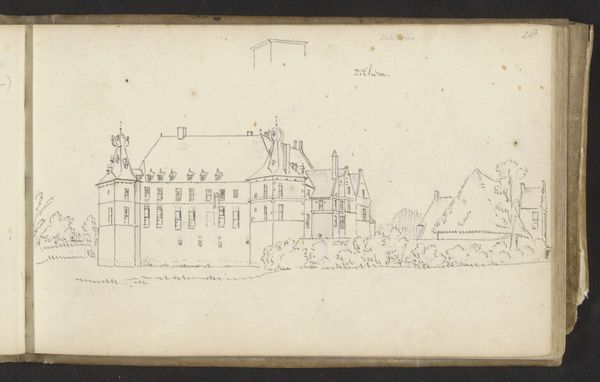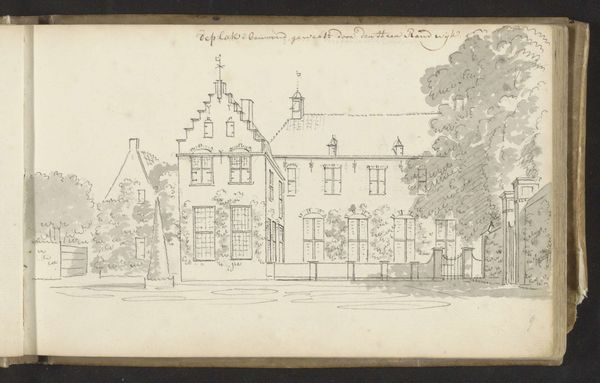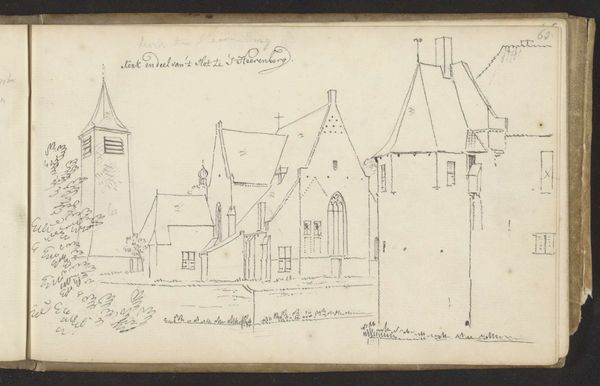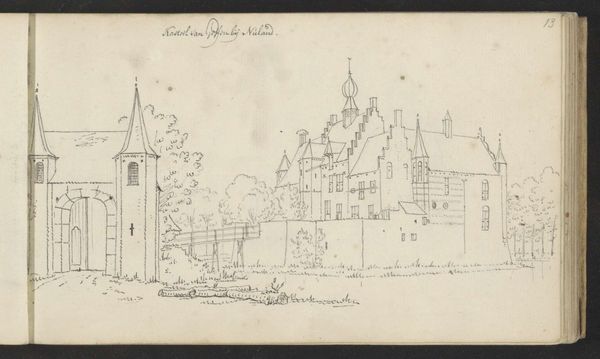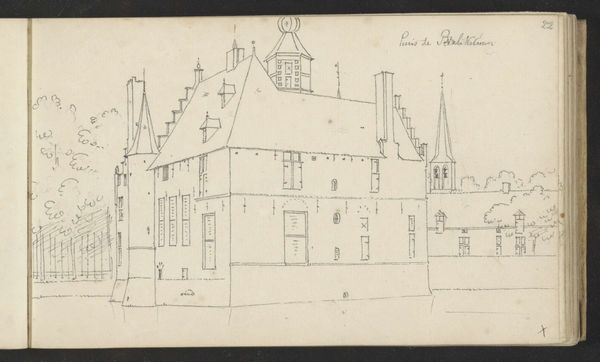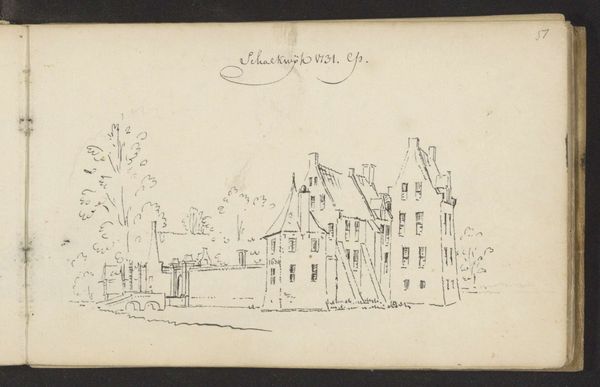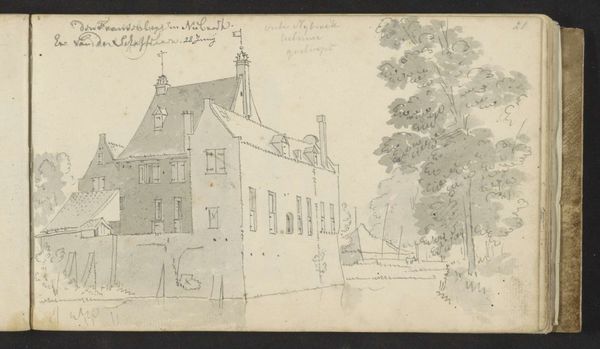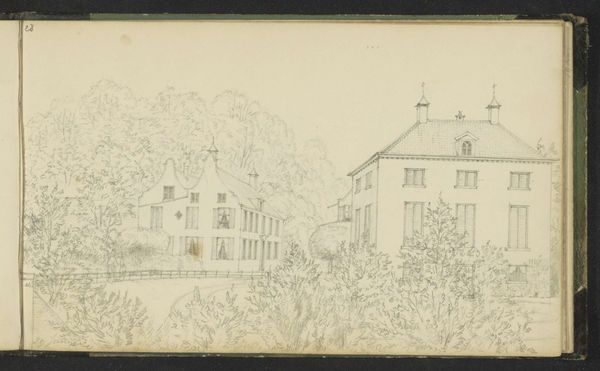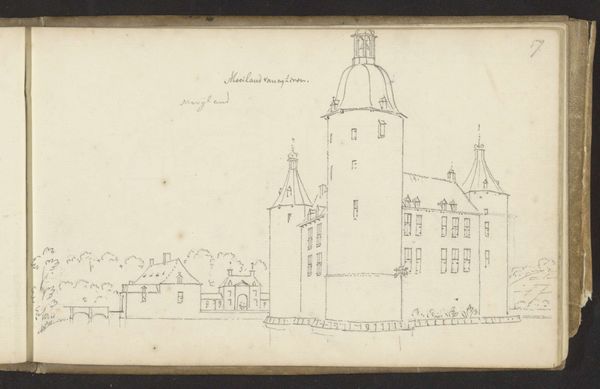
drawing, paper, ink, pen
#
drawing
#
aged paper
#
quirky sketch
#
dutch-golden-age
#
sketch book
#
landscape
#
paper
#
personal sketchbook
#
ink
#
sketchwork
#
pen-ink sketch
#
pen work
#
sketchbook drawing
#
pen
#
cityscape
#
history-painting
#
storyboard and sketchbook work
#
sketchbook art
Copyright: Rijks Museum: Open Domain
Abraham de Haen II captured this sketch of Kasteel Eyll near Kleef with pen and ink. The castle, a symbol of authority and power, stands here as more than just a building; it represents a nexus of history, culture, and human aspiration. The solid structure of the castle is a familiar motif throughout history. These fortresses remind us of the Tower of Babel. From medieval keeps to Renaissance palaces, they embody a desire for permanence and a struggle against the transient nature of existence. In this sketch, we see the castle almost as a protective figure, a silent witness to the passage of time. Consider how the image of a castle has evolved. In ancient times, fortifications were built for survival, a motif we still see today in modern-day city planning. The castle taps into our collective memory, stirring deep-seated feelings of safety, but also isolation. This psychological tension—the desire for security versus the fear of confinement—adds to the drawing's emotive power, engaging us on a subconscious level. The castle embodies the recurring, non-linear progression of historical symbols, reminding us that such motifs resurface, evolve, and take on new meanings throughout time.
Comments
No comments
Be the first to comment and join the conversation on the ultimate creative platform.
